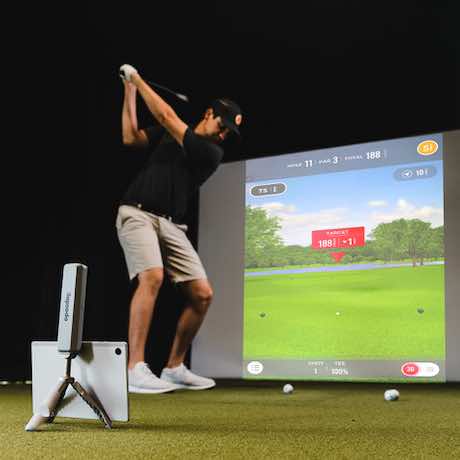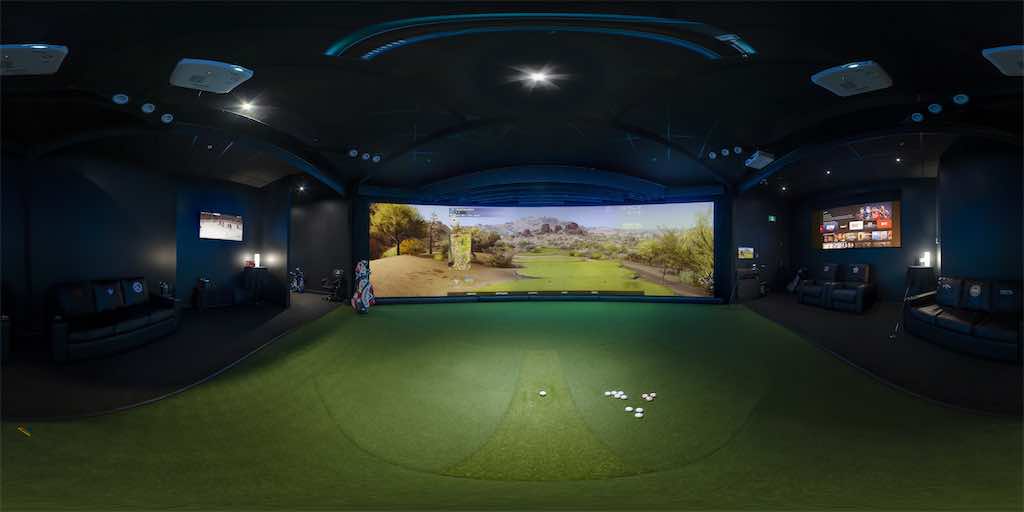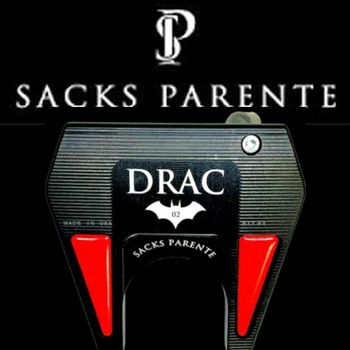The Cutting-Edge Future for Launch Monitors and Simulators as Software Innovation Inspires the Next Generation
By Brian Verdugo, iGolf CEO and Founder
Golf’s launch monitor industry continues to grow in leaps and bounds. It is expected to expand considerably over the next five years as some key players are spending lavishly, raising awareness, and looking to make serious headway.

Rapsodo Mobile Launch Monitor 2
Brands such as Rapsodo, SkyTrack, Full Swing, Flight Scope, aboutGolf, Uneekor, ProTee United, and TruGolf have become heavy hitters in an area where there has been very little competition over the past decade or so and, previously the lone standout was TrackMan. This high-priced, high-quality radar system uses Doppler technology to track and record the 3D characteristics of a ball in flight.
TrackMan’s growth continues, and just last year went into partnership with the PGA Tour. The technology will be used to trace every golf shot hit during the season, enhancing the fan experience on television, OTT, and digital platforms.
Additionally, 120 colleges across the country are now using TrackMan to monitor every pitch of their baseball games to help train, evaluate, and improve the overall performance of referees.
While this industry leader has put together, powerhouse deals with major sports bodies—up-and-comers are shaking up the world of launch monitors with more affordable options that bring this technology to the average golfer.
Outside of TrackMan helping pave the way with their successful model, the advent of TopGolf and gamification of the outdoor driving range—powered by tracked golf balls and automatically-scored drives—has become another exciting way for golfers from all walks of life to have fun with the game.
Prior to the experience offered at these sports entertainment complexes, there was the Golden Tee Golf revolution that took over bars and arcades in the early ‘90s—eventually featuring online networked play, where cabinets were linked to a central computer which compared scores for tournament play by the mid-90s—where tournaments fueled competitive play for cash prizes.
Still, a popular arcade game with a traditional trackball embedded in the console was just the tip of the iceberg for what TopGolf would eventually create with real clubs, balls, targets, and a scoring system.
Before sports entertainment venues like TopGolf started popping up nationwide, the only people with launch monitors or simulators were usually very serious about their golf game. They had the financial resources to invest low-five figures into acquiring these teaching tools.
The TopGolf phenomenon has not only tapped into the beloved and lucrative gamification market. It has also made golf an activity that is fun for the entire family – the newest form of the game night that is all about spirited, friendly competition as opposed to pure metrics and data.
Rapsodo had one of the most exciting reveals at the 2023 PGA Merchandise Show in January when they debuted their new MLM2PRO mobile launch monitor and golf simulator, which Forbes named Best-In-Show for the category.
This new portable device relies on radar technology to record all pertinent data – swing speed, ball speed, smash factor, distances, and so on – and users also have the ability to play on more than 30,000 simulated golf courses, adding an extra layer of gamification that appeals to both novices and experts.
PhiGolf is another forward-thinking golf brand that created a state-of-the-art, 9-axis sensor and portable swing stick that allows users to practice their swing almost anywhere. The more serious golfer can even place the PhiGolf sensor on their golf clubs, creating a more informative and engaging driving range experience.
Just like Rapsodo’s portable launch monitor, PhiGolf has different game modes and allows users to play on multiple famous courses.
Outside of being a new option for family game night or for the average golfer-gamer who lives, eats, and breathes the sport, simulators can also become country club revenue generators when year-round golf is not always an option due to inclement weather or during downtime when courses are being reseeded.
Take a golf mecca like Scottsdale, which has over 200 courses in the area. An ideal destination in late fall, winter, and early spring but with triple-digit temperatures during summer, Scottsdale has a several-month stretch when very little golf is played and country clubs are left vacant.
The high summer heat also greatly reduces the number of members who would normally visit the property and spend heavily on food and beverage while they are there. However, a small investment in a simulator can change everything and help lure back clientele, fueling alcohol sales through a fun indoor activity.
Several months ago, I was invited to watch the college football national championship game at a friend’s country club in San Diego.
I assumed we would be watching from his home, inside the gates of a premier club. Instead, we wound up in a new facility with a simulator and several flat-screen televisions, and this resulted in about 150 members and friends gathering there to eat, drink, watch the big game, and take turns whacking balls at a screen.
This is something that has become the standard on this property since the addition of a simulator gave these members their own high-end sports bar on site.
While it seems we are now seeing the future with these newer companies and their competitively-priced, portable launch monitors, it begs the question: what lies in store for the behemoths in this space?
The aforementioned licensing deals with the PGA Tour and NCAA are good high-level moves for the brand. Still, TrackMan remains averse to a good-better-best model and stands firm behind its lone high-end $20,000+ device, which caters only to a niche audience and will never reach the masses or the general consumer.
This does not take them out of the conversation by any stretch. Still, one has to wonder what else they have up their sleeve since their hardware prices out most and software innovation does not appear to be a strength – and therein lies the future of the launch monitor and simulator industry.
Software development and integration is changing this industry because it caters to the serious golfer and attracts the interest and involvement of kids, families and novices. The new indoor simulators now entering homes, country clubs, and other venues – they will be less focused on actual training and more geared towards users having fun, keeping score, and enjoying friendly competition. In many ways, they follow the TopGolf model, which has become the new Dave & Busters-type social gaming experience.
Gamification is also making waves at the professional level. While golf enthusiasts spent much of last year arguing the merits of LIV Golf breaking up the long-time monopoly of the PGA Tour, we saw the formation of TGL Golf – a new interactive golf league with an interactive technology-inspired experience the sport has never seen.
Tiger Woods and Rory McIlroy helped bring this concept to life with their company TMRW Sports while wisely partnering with the PGA Tour for the sake of exposure and credibility.
This tech-infused league is set to tee off in January 2024 and will showcase team matches in custom-built arenas on Monday nights, working in concert with the PGA Tour’s annual tournament schedule.
The league will feature six teams, each with three PGA Tour players. There will be 15 regular season matches leading to the playoffs and the championship finale.
Will golf respond to this new league with large numbers of spectators? Time will tell, but the bigger takeaway is the level of awareness regarding an entity like the PGA Tour embracing this cultural, and technological shift while getting behind a virtual golf league.
Big corporations are not always first adopters when embracing new technology, and they often prefer to see how these things work on a smaller scale or wait for proof of concept elsewhere before making the financial commitment to something new.
Bushnell’s parent company Vista Outdoors recently did the opposite. It ponied up a reported $474 million gross price purchase in the acquisition of Foresight Sports since they were eager to add the brand’s technology to their portfolio. Foresight is responsible for the popular GCQuad and GC2 launch monitors.
That move alone and the lofty price tag sent shockwaves throughout the industry while it also begged the question: so, now what? Vista Outdoors paid a monster number to acquire quality hardware in a space with its fair share of great products, but it raised further questions. First: how many units would need to be moved to justify that number while in a competitive marketplace with retention-of-talent challenges as other key players were hiring away the best of the best to grow their own platforms?
Second: What software innovation plans will continue to give this hardware a competitive edge? Because that is the million-dollar question—or in this case, $474 million.
An industry that has been dominated for decades by the best hardware is now shifting towards software innovation that supports quality products while creating gamification hooks that will lure new players into the game. The result is the next generation of serious golfers who are the torchbearers for the traditional segment of the greatest game moving forward.











